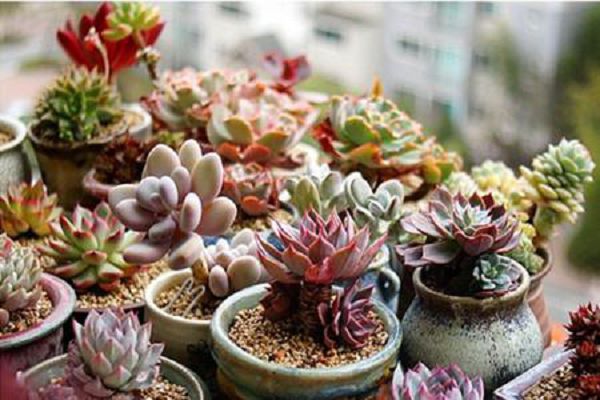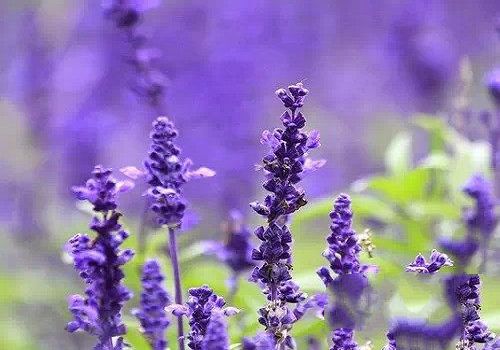A collection of common flowers in the family, which is super simple and practical.

Why do plants always die and can't be raised well? In addition to watering and lighting, there is another important point, but it is often overlooked, that is, the problem of soil distribution. Today, Huahua will learn the soil allocation methods of common flowers in the family.
Succulent soil matching method
Leaf cutting, beheading, sowing and soil distribution
Humid climate:
3 parts of seedling peat, 2 parts of perlite and 5 parts of vermiculite.
Dry climate:
2 parts of seedling peat, 2 parts of perlite and 6 parts of vermiculite.
Adult plant matching soil
Humid climate:
4 peat coconut bran, 1.5 perlite, 1 vermiculite, 3.5 red jade soil (or blue stone, river sand).
Dry climate:
6 parts of peat coconut bran, 1.5 parts of perlite, 1.5 parts of vermiculite, 1 part of red jade soil (or blue stone) (optional: if there is no long-term ventilation or there is no green space around the cement forest, you can add a little bit of fertilizer and clean chicken manure).
Soil distribution of old pile
Humid climate:
0.5 samples of perlite, 1.5 samples of vermiculite, 8 samples of red jade soil (or blue stone, river sand).
Dry climate:
2 parts of peat coconut bran, 0.5 parts of perlite, 2 parts of vermiculite, 5.5 parts of red jade soil or (blue stone, river sand).
Rose soil allocation method
Small seedling, bare root seedling
Soil distribution one:
3 parts of peat, 1 part of vermiculite (can be replaced by sand and perlite), 1 part of garden soil (this matrix contains more peat, pay attention to control watering times)
Land allocation II:
1 part of peat, 1 part of vermiculite (can be replaced by sand and perlite), 3 parts of garden soil; seedlings and bare root seedlings are not recommended to add base fertilizer.
Medium seedling and big seedling
Distribution of soil:
4 garden soil, 3 rotten leaf soil, 2 sand soil (can be replaced by vermiculite and perlite), 1 basin bottom organic fertilizer such as bone powder, cake fertilizer, mature sawdust, chicken manure, stable manure, and a layer of ceramsite at the bottom.
Note 1:
Do not let plant roots come into direct contact with basin organic fertilizer, organic fertilizer sandwiched between soil and ceramsite, should not be too much.
Note 2:
Organic fertilizer must be fully mature, after ripening can be basked in the sun, sterilization and disinfection, use more rest assured.
The magnolia is mixed with soil
A formula for growing leaves.
Applicable season:
This method can be used in spring, autumn and winter.
Soil allocation method:
Rotten leaf soil 50%, pine needle 30%, coarse sand 10%, the other 10% is pockmarked seeds, bone meal and other fertilizer, no bone meal and pockmarked seeds, a small amount of fried tasteless melon seeds are buried at the bottom, and some charcoal or cinder are put under the seeds to permeate air and water.
Advantages:
When this method is planted in the magnolia pottery pot, it will be watered once every 7 days. The leaves of the water feet grow very fast.
A formula for raising roots.
Applicable season:
For summer.
Soil allocation method:
Rotten leaf soil 30%, pine needle 40%, coarse sand 15%, pockmarked bone meal and other fertilizers 10%, plus 5% ceramsite perlite, the bottom is covered with charcoal or cinder.
Charcoal can find barbecue stalls to buy less, broken into soybean-sized particles at the bottom.
Advantages:
This method is watered in the gentleman orchid pottery basin about once every two or three days. Leaves grow slowly, but because of their good air permeability and poor water retention, they have the effect of promoting the growth of new roots.
Asparagus soil allocation method
Distribution of soil:
1 part of rotten leaf soil, 2 parts of garden soil and 1 part of river sand were mixed as substrate.
Note:
When planting, add a small amount of rotten animal manure to the bottom as base fertilizer.
Soil preparation of foliage plants such as orchid, green pineapple, ivy and so on.
Seedling stage
Distribution of soil:
4 of rotten leaf soil, 3 of garden soil and 2 of river sand
Growing period
Distribution of soil:
3 of rotten leaf soil, 3 of garden soil and 3 of river sand
Large plants such as Wealth Tree, Happiness Tree, Brazilian Wood and so on are mixed with soil.
Allocation of soil 1:
There are 6 parts of garden soil, 2 parts of mature organic fertilizer and 2 parts of coarse sand.
Soil allocation 2:
8 parts of rotten leaf soil and 2 parts of cinder ash.
Acid-loving plants such as gardenia, camellia, rhododendron, etc.
Distribution of soil:
Peat soil 6, coarse sand 4, bone powder 0.5.
Petunia, Beautiful Sakura, Catharanthus roseus and other common grass flowers
Sowing soil
Matching soil: rotten leaf soil 5, garden soil 3, river sand 2.
Colonized soil
Rotten leaf soil 4, garden soil 5, river sand 1, bone powder 0.5.
Have the babies learned such a simple and rough method of soil preparation? If you have a better and more powerful method of matching soil, go to the comments and tell Huahua and more flower friends! Love you guys, baby.
Related
- What if the leaves of potted flowers turn yellow?
- Florescence Control of several Flowers
- Anti-freezing technology and post-freezing nursing technology of flowers
- What is the classification of flowers? What are the common methods of flower classification?
- Prevention and control of alkali and acid damage of flowers in courtyard
- Technology of Anti-freezing and restoring growth of Flower seedlings in greenhouse and greenhouse
- How does flower fertilization not hurt the root? Fertilization technology of flowers
- Key points of disinfection in flower greenhouse
- Several pesticides that are banned or used cautiously in flowers
- How to fertilize the flowers that watch the leaves?



